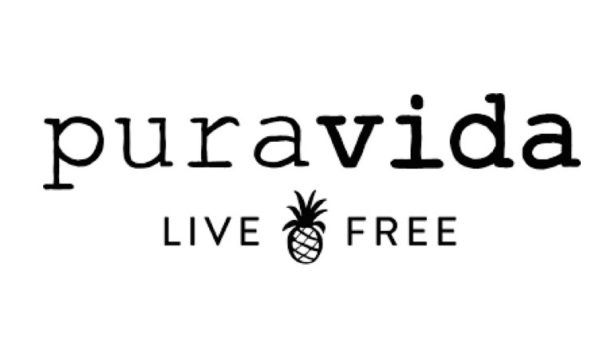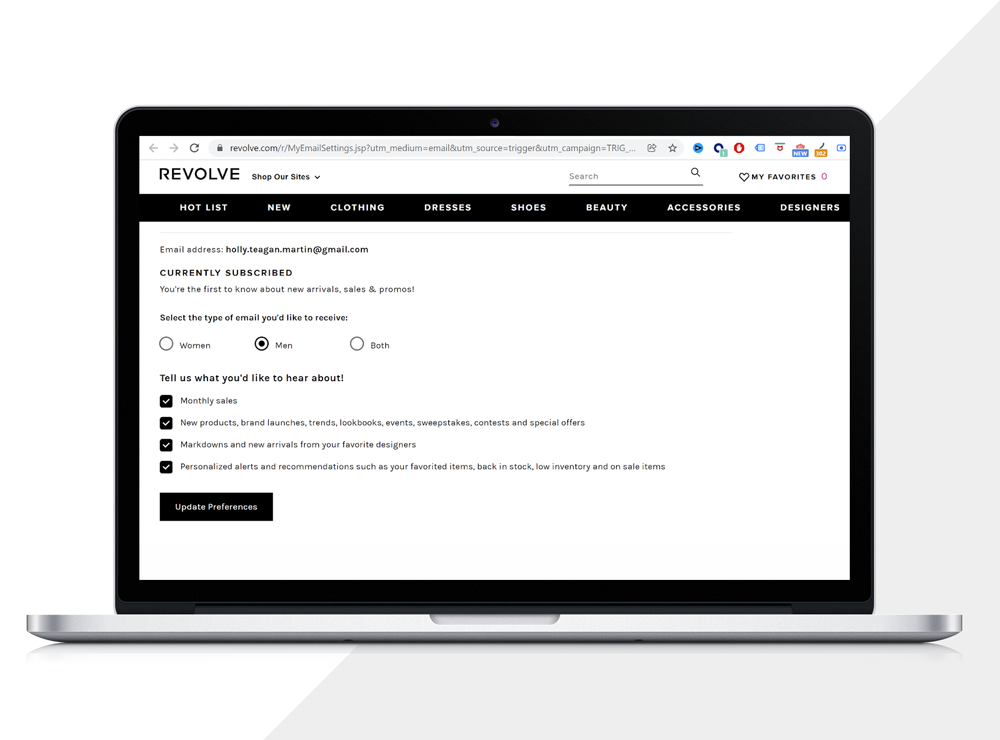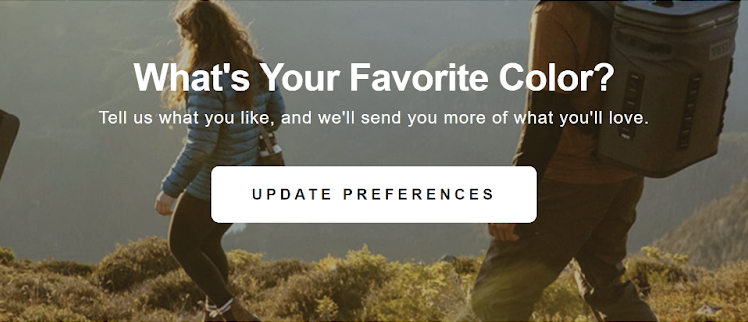EMAIL EXPERIENCE

Preference centers
Only 36% included access to a preference center in their emails, the worst culprit being transaction-focused emails.
Allow email preference customization directly from the inbox
A preference center empowers customers to take control and define the nature of their communication with a retailer. Putting it front and center shows respect and acknowledges the two-way nature of the relationship. Including a link to a preference center in emails makes it easier for customers to customize communications directly from their inbox and could well prevent a frustrated or overwhelmed recipient from simply hitting the unsubscribe button. The results of our research here were clear: brands must try harder when it comes to supporting customer preferences. Only a third (36%) included access to a preference center in their emails, the worst culprit being transaction-focused emails. Many brands displayed a tendency to bury preference center options — embedding them in customer account settings sections on the website or hidden behind the 'unsubscribe' option. This has a negative effect for brands and subscribers alike.
Burying preference centers wasn't the only mistake that organizations made. Many brands also fell short in their customization options. While name and email were the most common items collected, these basic data items don't really add value for the consumer. More detailed data that benefits subscribers such as communication frequency, preferred channel, and preferred content type were often missing. This shortcoming, highlighted in last year's report, still needs addressing. Retailers in some sectors stood out for their sophisticated approach to preference centers. Fashion retailers were among the most adept, with Revolve setting the trend. Outdoors-focused retailers like Yeti also paid extra attention to gathering and acknowledging customer preferences. Retailers that don't focus on quality preference centers miss the chance to build trust and loyalty with consumers while leaving valuable data on the table. More detailed preference center data fuels highly segmented campaigns that use anniversaries and birthdays, product preferences, and customer interests or hobbies to stay relevant to recipients. A good preference center can help businesses craft powerful messaging that is always on-point, generating interest around focused product and service categories to help drive subscribers further down the marketing funnel.
More detailed data that benefits subscribers such as communication frequency, preferred channel, and preferred content type were often missing
EXPERT COMMENTARY:

Acquiring new customers through collecting emails is no longer enough. Visitors are more skeptical than ever, and for that reason, need gentle coaxing into giving up their email through a variety of worthwhile incentives. You need to meet each segment where they are in their journey (first-time visitor, email subscriber, repeat buyer) and give them what they need to take the required next step.


Pura Vida has clear labels for email preferences, with easily identifiable options for communication frequency and type.

Revolve’s easy toggle buttons help subscribers select their preferred gender along with update options for sales and new products. They can opt in or out of personalized recommendations, giving Revolve express permission to run segmented campaigns.



Yeti's preference center is one of the most comprehensive we've seen, gathering information on the subscriber's hobbies and interests and even their favorite color. Customers can opt into SMS text communications alongside email and the ability to change preferences without signing in made the experience friction-free. We were impressed by Yeti’s welcome email that prompted subscribers to update these preferences.

